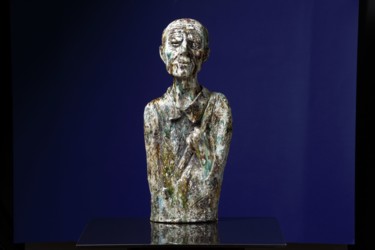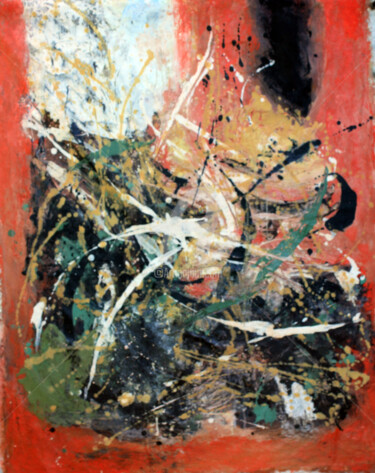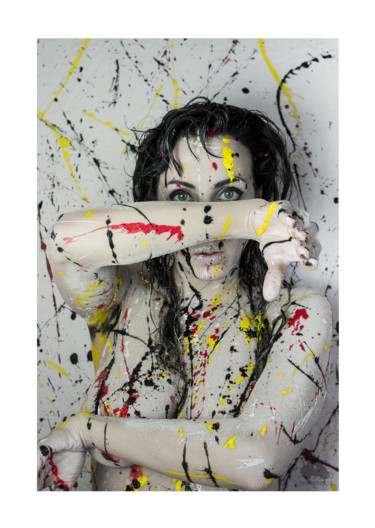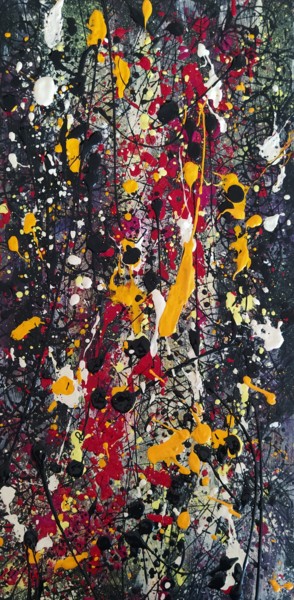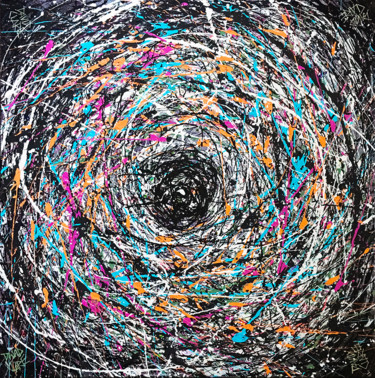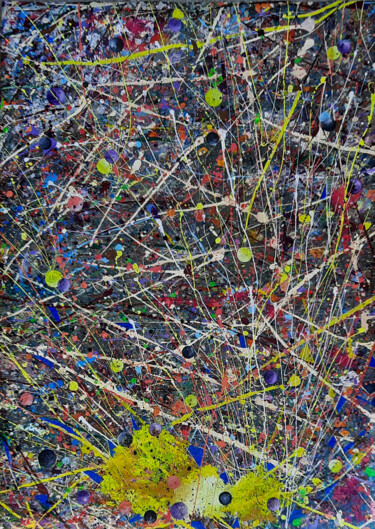Abstract Expressionism
Abstract Expressionism, an artistic trend that flourished around the middle of the 20th century in America, was born from the combination of the strong emotionality and self-denial, manifested by German Expressionism, with the anti-figurative aesthetics of Futurism, Bauhaus and Synthetic Cubism. In addition, Abstract Expressionism, was also strongly influenced by the production of Vasily Kandinsky and the spontaneous expression of unconscious life, which marked Surrealism. Finally, Mexican mural painting and Native American symbols and rituals were also certainly an important source of inspiration for the aforementioned movement.
As for the historical context in which Abstract Expressionism developed; we find ourselves in post-war America, devastated by the Great Depression, where artists decided to take refuge in the unconscious, to escape from the sense of precariousness that had invaded their lives. In fact, from a conceptual point of view, the movement is very much linked to the psychoanalytic investigation of the unconscious developed by Jung. In addition, this loss of confidence in life, also determined the movement's rejection of the aesthetic conventions of the time and the desire to break free from the historical, social and political contingencies imposed by society. In order to pursue these aims, Abstract Expressionism broke away from the intellectual representation of external reality and the depiction of the unconscious through images, which had distinguished previous artistic currents, such as Cubism and Surrealism.
Finally, around 1945, Abstract Expressionism was divided into two different artistic forms: Action Painting and Color-field Painting. The first gave life to works characterized by attention to the materiality of painting and especially to the gesture of painting, the second focused on an extreme research on color, sometimes thickened on almost monochrome surfaces.
Jackson Pollock, Autumn Rhythm (Number 30), 1950. Enamel paint on canvas, 266.7 × 525.8 cm. New York, Metropolitan Museum of Art.
Action Painting and Pollock's "dripping"
The term Action Painting indicates a painting that focuses on the act of painting, that is, the gesture, the action, through which the artist places the colors on the canvas, which is innovatively interpreted as a means to know the psyche, spirituality, emotions and vital energies. These paintings, which are born without a project, revealing themselves only when the artist begins to paint, become the symbol of spontaneous action, indissolubly linked to human existence and, in this case, to that of the artist. As far as painting technique is concerned, the Action Painting gesture consists of spontaneously throwing or dripping color onto the canvas, without applying it in a targeted manner.
Dripping, as mentioned above, is a painting technique that consists of dripping colors directly from the tube, or can of paint, onto a canvas placed on the ground. Max Ernst was the first to experiment with it, but Jackson Pollock, one of the most important representatives of Action painting, was the one who perfected it. Pollock's "dripping", achieved through the use of a stick, which the artist used to drip the color on the canvas lying on the ground, was also accompanied by strokes of the brush, the palette knife or by rubbing the tube of color on the surface of the canvas. In fact, Pollock's paintings are the result of a complex technique, realized by the union of multiple layers of color.
Pollock's "dripping" was born from the inspiration the American artist drew from the unconscious-ritual world of Native Americans. In fact, when Pollock performed his dripping, moved only by his creative instinct, he seemed to "dance" around the canvas, just like a shaman in a state of trance. This somewhat extravagant ritual is itself part of the work of art, because if we follow the colors imprinted on the canvas we can imagine the gestures that created them. In any case, even this gestural and instinctive narrative was born following a logic: Pollock dripped the color in such a way as to avoid the creation of ellipses and curled structures, using, probably unintentionally, the laws of fluid mechanics. In conclusion, we don't know if Pollock was aware of the scientific nature of his techniques, but it is certain that he repeatedly stated that he denied randomness.
The "dripping" technique in the works of Artmajeur artists
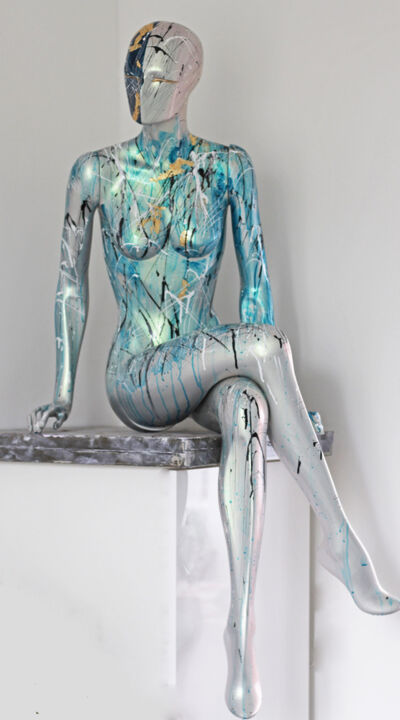 Carolina Vis, "In my head” new collection!, 2021. Acrylic, ink, pigments and resin, 157 x 75 x 60 cm.
Carolina Vis, "In my head” new collection!, 2021. Acrylic, ink, pigments and resin, 157 x 75 x 60 cm.
If the traditional "dripping" was born to give color to a white canvas lying on the floor, the artists of Artmajeur have taken up this technique to change, in an original and very personal way, its intended use. In fact, in the work of Carolina Vis, entitled "In my head" new collection!, Pollock's painting technique is proposed on a resin sculpture, depicting a woman-dummy. Carolina's dripping is less stratified and diffused than that of the American artist, leaving a glimpse in many points of the color of the "flesh" of the sculpture. Moreover, the presence of the mannequin, which is inextricably linked to the representation of the human figure, distances Carolina Vis's work from the total abstractionism that distinguished Pollock's dripping. Finally, observing some of the sculptures made by Pollock, including Stone Head (1930-1933), we realize that he did not use the technique of "dripping" to color them, as many artists who wanted to pay homage to him did.
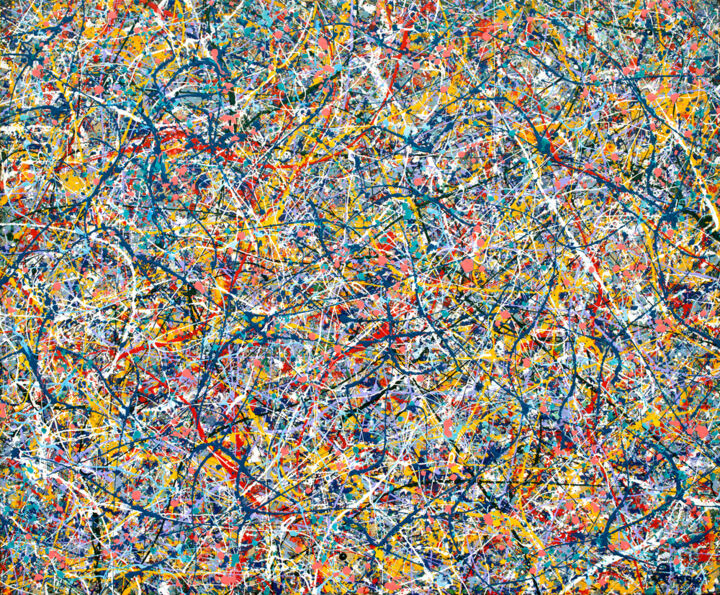 Denis Kujundzic, Dedication Pollock, 1996. Oil on MDF panel, 100 x 122 cm.
Denis Kujundzic, Dedication Pollock, 1996. Oil on MDF panel, 100 x 122 cm.
The work, original and not reproduced, by Denis Kujundzic, entitled Dedication Pollock, faithfully reproduces, according to the title, the features of the American's paintings, which were made with the technique of "dripping". In fact, we can imagine the artist of Artmajeur in his studio, intent on "dancing" around the canvas, as if he were participating in a shamanic ritual. Consequently, we find ourselves once again in front of a work, which, not being premeditated, has manifested itself in its features only when the artist has directed his gestures on the canvas. Finally, it is probable that Denis Kujundzic wanted to pay homage to Pollock's work, because, besides esteeming the artist, perhaps he also shares his poetics, that is the desire to take refuge in the unconscious to escape from the precariousness of our lives.
 Kim Gagnon, Tant qu'on a de l'amour, 2021. Acrylic on canvas, 101,6 x 121,9 cm.
Kim Gagnon, Tant qu'on a de l'amour, 2021. Acrylic on canvas, 101,6 x 121,9 cm.
Pollock had taken refuge in the unconscious to escape from society, while Kim Gagnon clearly wants to communicate with it, sending an obvious suggestion, made explicit by the large writing that the work shows in its center: "love". It is precisely this phrase that interrupts the extension of the dripping technique, which is arranged within the imprecise frame and at the ends of the writing. Finally, it is these last two elements, distinguished by the same chromatism, that make the work original and unique in its genre. Imagining now the creative act of this work, we can think that the shamanic dance of creation of the artist has been interrupted in the moment of realization of the writing and the frame.

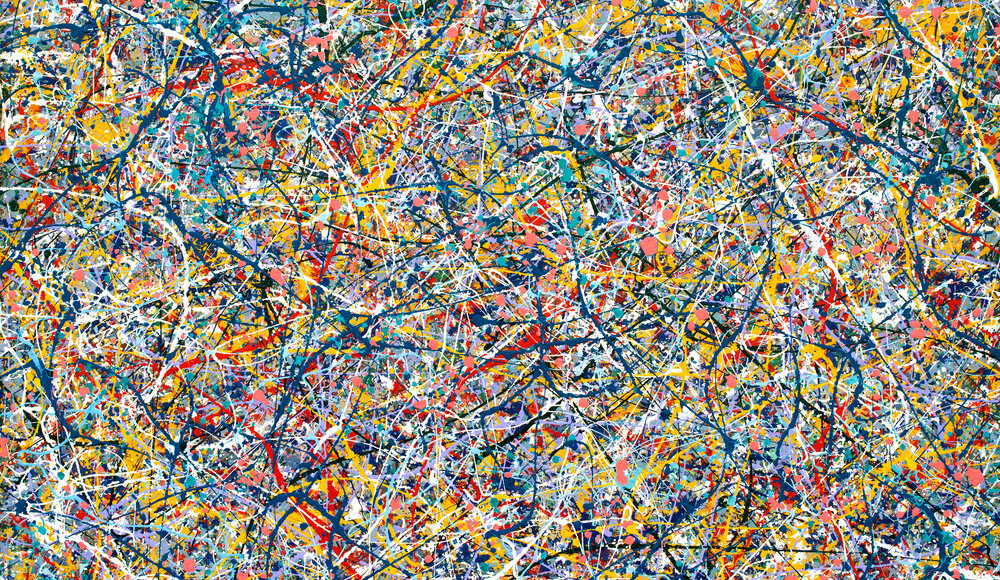
 Olimpia Gaia Martinelli
Olimpia Gaia Martinelli


